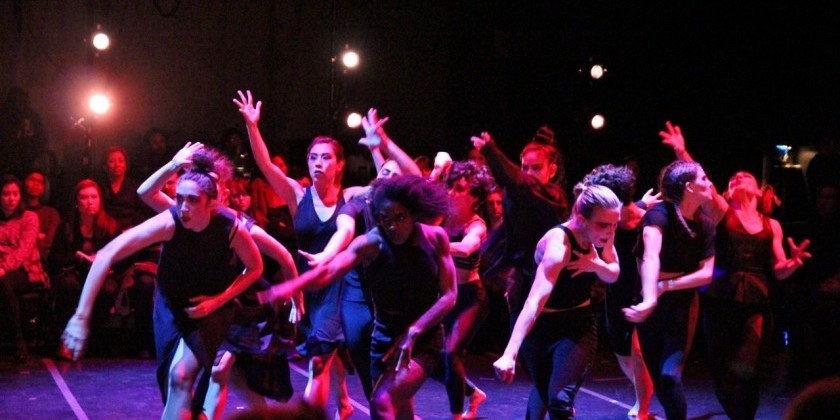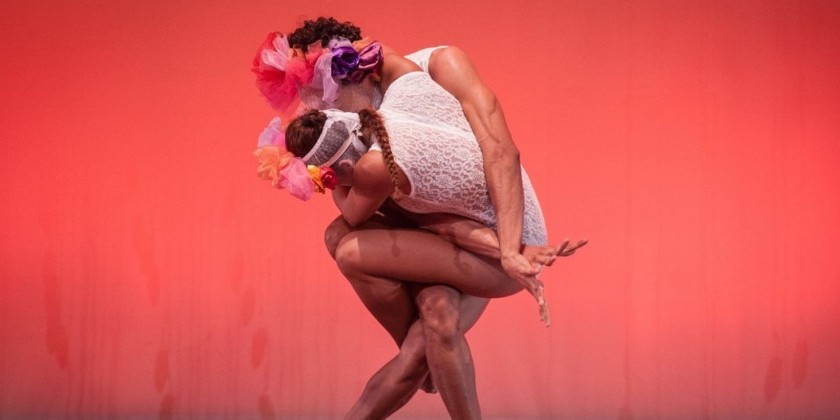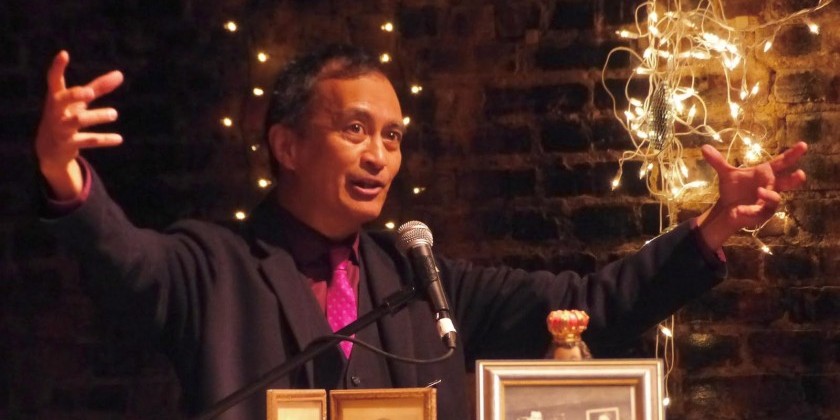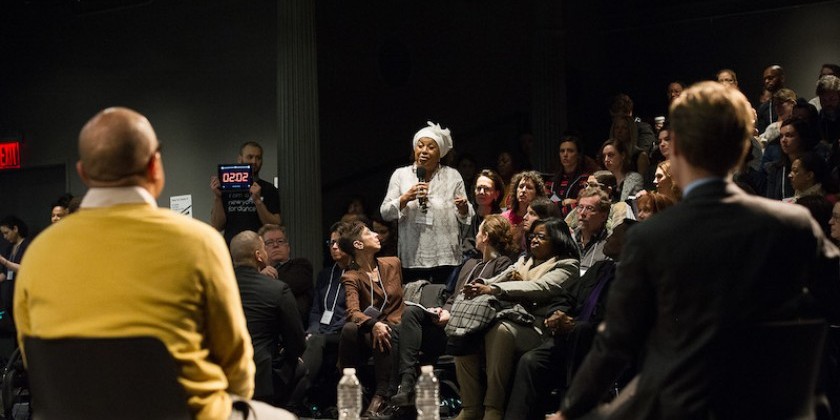CUNY Dance Initiative Recipients 2014 Share Thoughts on The First Year of An Innovative Program

BARE Dance Company’s Mike Esperanza, Full Circle Productions’ Ana Rokafella Garcia, Tiffany Mills, and Decadancetheatre’s Jennifer Weber offer a glimpse into their experiences during their CDI residencies.
If there’s one thing dancers and choreographers can agree on, it is the necessity of space. A 2010 report by The Andrew Mellon Foundation, “We Make Do,” made this strikingly clear. Fast forward to 2015, the second year of the CUNY Dance Initiative (CDI), a response to the Mellon study.
Manager Alyssa Alpine calls CDI “a partial answer to the affordable rehearsal space crunch that is a particular struggle for independent choreographers and small to mid-sized dance companies.” The program’s 2014 launch was not only covered by the Dance Magazine, and the New York Times; even the Wall Street Journal chimed in to celebrate “More Floors for City Dancers.”
With funding from New York Community Trust and the Mertz-Gilmore Foundation, CDI provided rehearsal space residencies to 19 choreographers in 2014, and has offered residencies to 26 artists for its second season. Partnering colleges, who select and manage all artists and their residencies, are also learning a great deal about the needs and expectations of NYC’s dance community.
Alpine says, “Receiving 100 applications from choreographers and dance companies interested in having a residency has been eye opening.“
CDI is officially administered by Queens College, the home of its driving force, Jeff Rosenstock, who was “smart enough” to request multi-year funding for the program. Alpine is also supported by the college’s development staff and the CUNY Communications team. “I’ve focused a lot of time on creating a clear structure for the program,” she shares. From fielding questions, to managing budgets, to overseeing marketing, Alpine has come to understand the varying resources and goals of each school.

The choreographers also come in with a variety of needs, goals, and expectations. BARE Dance Company’s Mike Esperanza, Full Circle Productions’, Ana Rokafella Garcia, Tiffany Mills, and Decadancetheatre’s, Jennifer Weber offer a glimpse into their experiences during their CDI residencies while sharing their vision for the future of their work, this initiative, and the broader dance community.
A. Nia Austin-Edwards for The Dance Enthusiast: What have been some of the successes and gifts of these residencies?
Jennifer Weber: Space. It was such a luxury to rehearse in the beautiful, huge studios at Hunter. So often I've had to book a studio that was actually too small for my ideas because of budget. For this residency, having the physical space needed for a twelve-person show was key to our creative process. We were able to push the work to be explosive without worrying about what each hour costs, and to dance full out much earlier in our process. It was also helpful to share our work in open rehearsals and get immediate feedback.
Alyssa Alpine: It’s been incredibly satisfying to see the residencies happen. It all came together very quickly. I feel the program is making a difference for a sizeable number of artists already. Some successes are public, like The Syncopated Ladies’ packed house at John Jay College for their first full-length show. Others are more behind-the-scenes.
Mike Esperanza: The CUNY residency made possible an evening-length work I had wanted to create for some time. It is a deeply personal piece and it was very important for me to find the right time and place to premiere it.
Tiffany Mills: The students' continue to dialogue with me via email and social media with an interest in my company's classes, performances, etc. As an artist and teacher, it is always rewarding to be appreciated.
Also, my company was so well received that Queensborough Community College (QCC) has proposed additional opportunities for us. Our initial CUNY Dance Initiative Residency has blossomed into a second residency in 2015, a new work on QCC in 2016, a fully produced performance and an adjunct faculty position.
Ana Rokafella Garcia: It has been great to return to my borough and work on a new dance piece in a place devoted to higher learning. It also gives my young dancers the ability to believe that all things are possible if you are organized and willing to work hard.

TDE: What has been the greatest challenge that has come with your CUNY residency?
Tiffany Millls: Finding time to travel to and from QCC.
Mike Esperanza: Planning out the experience for audience members, and pushing the envelope creatively while making sure each guest felt invited in. Adding an immersive component to the dance performance was exciting but challenging to maneuver at first. However the time and space we were given to work out transitions along with brave choices by the performers made it possible.
Ana Rokafella Garcia: It was hard to book studio time around the school’s existing programming. My dancers and collaborating artists of our new Hip-hop Theater piece, Outside the Bachx, have diverse schedules that are already limited by jobs and family, but we were able to make head way.
Alyssa Alpine: One thing we’re definitely figuring out is around event scheduling. The colleges are truly interested in building audiences for dance on their campuses, and one challenge is finding a time to hold events like open rehearsals that works for both students and the working public. While 2pm on a weekday might be great for students, that’s not ideal for everyone else.
Jennifer Weber: Wishing we could be adopted by Hunter and stay forever!

TDE: What has the CUNY residency offered you at this moment in your career, and how will it support your next move?
Esperanza: The CUNY residency allowed me to fuse my background in music, visual art, and dance to create something special without the normal restraints. It put me in a position where I could direct a show exactly the way I wanted the guests to see, hear, and experience it. During this residency, I was presented with new possibilities, contacts, and other potential spaces presentation. Also, it broadened my connection to the students, and hopefully broadened their connection to the arts.
Rokafella Garcia: It benefited us to have an audience that was aware of our need for feedback. Our open rehearsal was promoted as an interactive event so we could gauge people's reaction to the show's segments. Otherwise we wouldn't know whether to continue in the direction we were going or make radical changes. We also hope some of the audience will return to see the completed work in the spring.
Mills: It provided our company time to dig deeply into material of a multi-year project in a large, beautiful studio. QCC became our "home" -- a safe and consistent place for exploration. All the new material we generated is propelling us forward towards national and international touring.
Weber: The CUNY residency and The Hip Hop Nutcracker pushed my work to the next level. The show, which was performed at The United Palace in Washington Heights and NJPAC in Newark, was the biggest success I have experienced in terms of audience response, critical response and ticket sales. Without the residency, I know I wouldn't have been able to create such a big work in such a short time. The Hip Hop Nutcracker will return to these local venues and tour annually. Having a staple show like this in our rep will provide lots of work for years to come!

TDE: What are your greater hopes for this Initiative and anyone who receives a residency?
Esperanza: The limitations of cost and space are usually a huge obstacle in creating a piece. The CUNY residency alleviated that thought and made the focus on the creative process. Participants are grateful for this commitment to the work itself, and hopefully will find freedom in their creativity and room to grow, as I did.
Weber: I hope the partnerships between artists and schools can continue with more crossover. If the residencies could lead to more collaboration between NY choreographers and students, everyone will benefit.
Mills: My hope is that a diverse range of worthy artists and companies can enjoy the gift of space, time and support to continue growing their work.
Rokafella Garcia: I hope that there can be more support of local, outer-borough artists who have a desire to create dance. Many people quit due to lack of resources. If you don't have funding, you can't pay for studio time and can't pay dancers to learn your technique and choreography. If you don't make the rounds performing quality dance pieces, your credentials are in question when compared to other more established dancers/choreography. A CUNY residency can offer opportunities to develop work, present dance and keep the momentum going. Often, without a reel or great photos you will not be chosen for concert or festival rosters. Thanks to the CUNY Dance Initiative, a couple of Hip-hop choreographers (Kwik and I) who do not have MFA's, will transcend the streets once again with a better product than if left to fend for themselves in this very competitive world. It is important for NYC to take care of its home-grown, born-and-bred talented artists.













